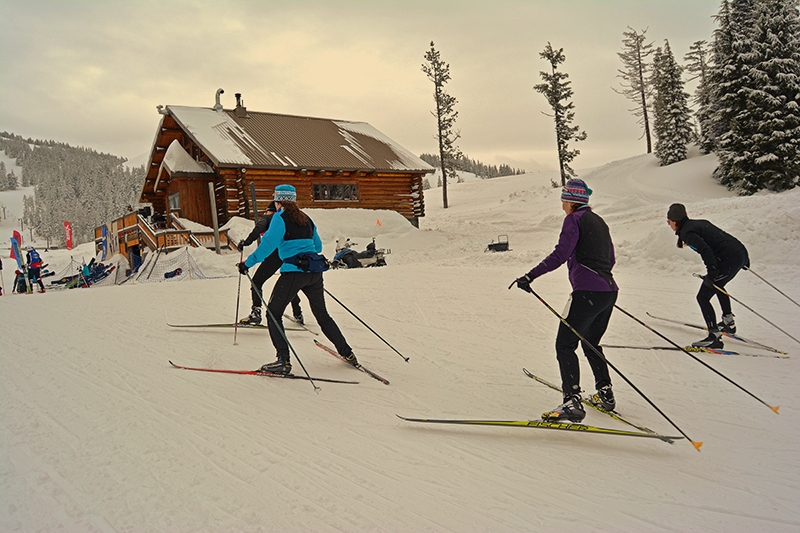
Nordic skiing, or cross-country skiing, is an ideal way to stay active in the snowy, winter months. It is low-impact on the joints, uses both the upper and lower body muscles, and is an excellent cardiovascular workout. Cross-country skiing is a difficult sport to master because it requires coordination, strength, and endurance. Injuries can often be prevented by developing all three of these key elements and preparing properly.
Skiers may also be prone to overuse injuries including medial tibial stress syndrome (shin splints), Achilles tendon problems, and back pain. Whether a beginner or an experienced skier, accidents can occur. The most common trauma injuries the orthopedic doctors at The Center see are dislocated shoulders, rotator cuff tears, injuries to the knee joint, thumb injuries, and torn hamstrings.
Before ski season
Dryland train to develop your endurance. Hiking, biking, running, or using roller skis for advanced skiers, several times a week will help you be ready for the season. Include strength training for the upper body, lower body, and abs. Working on your balance is often ignored, but is important for both injury prevention and ski performance.
Warm Up
Cold muscles are more prone to injury. Warm up every time you go ski with some easy skiing on flat terrain. Include a series of drills such as using no poles, one pole, and double poling. Skiing slowly also helps develop balance and muscle memory, which will help your overall skiing.
Technique
Even advanced skiers can develop injuries if their form is incorrect. Using proper technique decreases stress on your body, and helps avoid injury. Beginners should take lessons to learn how to position the body and fall correctly to reduce the risk of injury. Watch the videos below to learn about downhill nordic skiing techniques and the proper way to get up after a fall.
Use proper equipment
Make sure your skis, boots, bindings, and poles fit properly and are in good condition. Equipment that is too small or too large can lead to poor biomechanics and injuries. Wear glasses or goggles that allow you to see the terrain clearly to prevent falls. Weather conditions can change quickly, so wear layers of clothing with a waterproof outer layer. If your muscles get cold, injuries are more likely to occur.
Take breaks
Most injuries occur when skiers are fatigued. Especially during the first ski sessions of the season, take breaks and increase your time out on skis slowly. If you are feeling tired, take a break.
Winter weather safety
Pay attention to the weather. A storm with high winds, low visibility, heavy, wet snow, a sudden drop in temperature, or a sheet of blue ice can all lead to injuries when you’re on the trails.
Cross-country skiing is a fun and active way to enjoy winter with a low incidence of injuries compared to other sports. By following these injury prevention tips, you will have a safe and enjoyable ski season. Happy trails!





